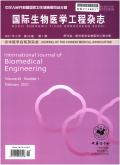Mechanism and effect of metformin on inflammatory cytokines in rats with cerebral ischemia-reperfusion injury
引用次数: 0
Abstract
Objective To investigate the effect and mechanism of metformin on inflammatory cytokines after cerebral ischemia-reperfusion injury in rats. Methods A rat model of middle cerebral artery occlusion (MCAO) was established by suture method. The neurological function was evaluated by modified neurological function score (mNSS). The apoptosis was detected by TUNEL method. The levels of interleukin-6 (IL-6), interleukin-8(IL-8) and tumor necrosis factor alpha (TNF-α) in serum were detected by enzyme-linked immunosorbent assay (ELISA). The expression levels of hypoxia inducible factor-1α(HIF-1α), BAX and BCL-2 protein in brain tissue was detected by Western Blot. Results Compared with the control group, the neurological function scores and the tissue cell apoptosis of the rats with cerebral ischemia injury was both significantly increased (all P<0.01). Compared with the model group, metformin could alleviate the rats' neurological damage after cerebral ischemia-reperfusion, and the expression of IL-6, IL-8 and TNF-α in serum were significantly decreased (all P<0.01). The expression of HIF-1α and BAX proteins were significantly down-regulated and the BCL-2 protein was up-regulated by metformin in rat brain tissue so as to regulate the expression of apoptosis-related proteins and reduce the apoptosis of brain tissue cells. Conclusions Metformin can reduce the expression of inflammatory cytokines and inhibit the apoptosis, which may play a protective role for cerebral ischemia-reperfusion injury. The mechanism may be related to the regulation of apoptosis-related protein expression, inhibition of HIF-1α expression, and inhibition of the release of related inflammatory factors TNF-α, IL-6 and IL-8. Key words: Metformin; Cerebral ischemia reperfusion; Hypoxia inducible factor-1α; Inflammatory cytokines二甲双胍对脑缺血再灌注损伤大鼠炎症因子的影响及机制
目的探讨二甲双胍对大鼠脑缺血再灌注损伤后炎性细胞因子的影响及其机制。方法采用缝合法建立大鼠大脑中动脉闭塞(MCAO)模型。采用改良神经功能评分(mNSS)评价神经功能。TUNEL法检测细胞凋亡。采用酶联免疫吸附试验(ELISA)检测血清中白细胞介素-6 (IL-6)、白细胞介素-8(IL-8)和肿瘤坏死因子α (TNF-α)水平。Western Blot检测大鼠脑组织缺氧诱导因子-1α(HIF-1α)、BAX、BCL-2蛋白的表达水平。结果与对照组比较,脑缺血损伤大鼠神经功能评分和组织细胞凋亡均显著升高(P<0.01)。与模型组比较,二甲双胍能减轻大鼠脑缺血再灌注后的神经损伤,血清中IL-6、IL-8、TNF-α的表达均显著降低(P<0.01)。二甲双胍可显著下调大鼠脑组织中HIF-1α和BAX蛋白的表达,上调BCL-2蛋白的表达,从而调节凋亡相关蛋白的表达,减少脑组织细胞的凋亡。结论二甲双胍可降低炎性细胞因子的表达,抑制细胞凋亡,可能对脑缺血再灌注损伤具有保护作用。其机制可能与调节凋亡相关蛋白表达,抑制HIF-1α表达,抑制相关炎症因子TNF-α、IL-6、IL-8的释放有关。关键词:二甲双胍;脑缺血再灌注;缺氧诱导因子-1α;炎性细胞因子
本文章由计算机程序翻译,如有差异,请以英文原文为准。
求助全文
约1分钟内获得全文
求助全文

 求助内容:
求助内容: 应助结果提醒方式:
应助结果提醒方式:


